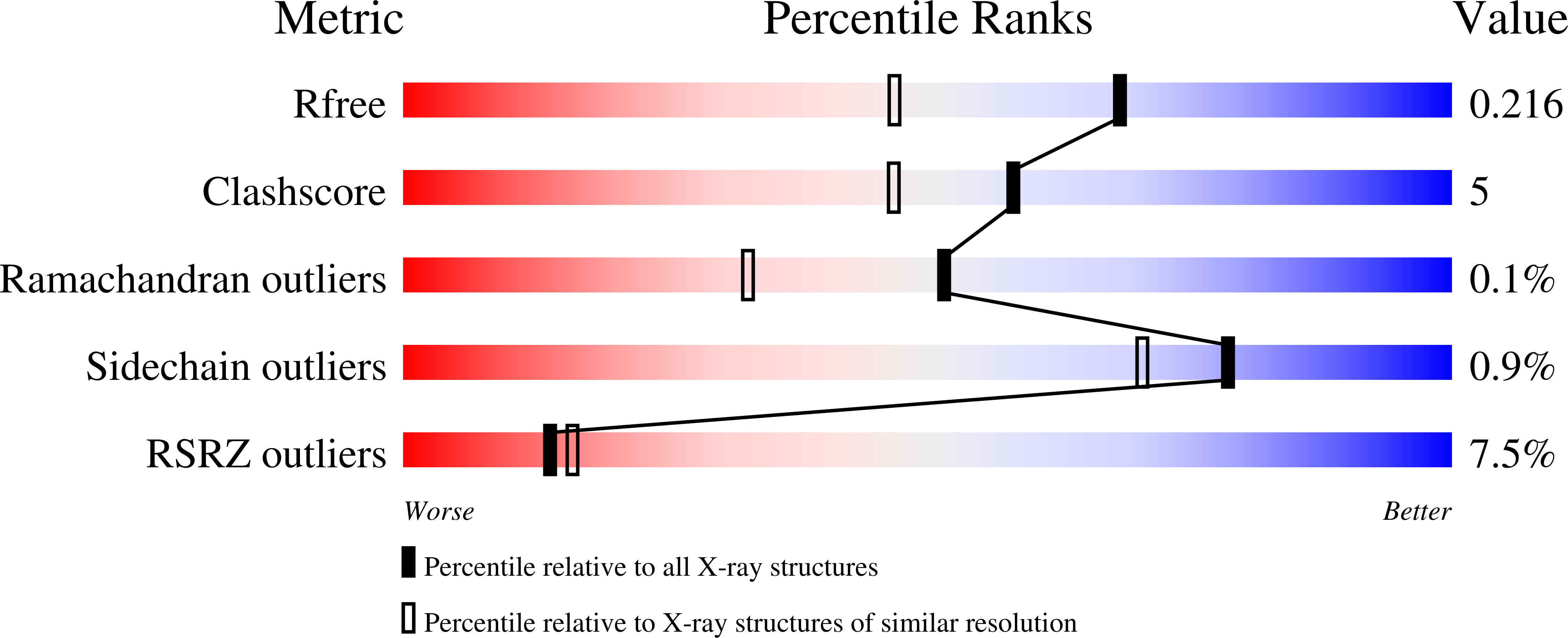Crystallographic study to determine the substrate specificity of an L-serine-acetylating enzyme found in the D-cycloserine biosynthetic pathway
Oda, K., Matoba, Y., Kumagai, T., Noda, M., Sugiyama, M.(2013) J Bacteriol 195: 1741-1749
- PubMed: 23396912
- DOI: https://doi.org/10.1128/JB.02085-12
- Primary Citation of Related Structures:
3VVL, 3VVM - PubMed Abstract:
DcsE, one of the enzymes found in the d-cycloserine biosynthetic pathway, displays a high sequence homology to l-homoserine O-acetyltransferase (HAT), but it prefers l-serine over l-homoserine as the substrate. To clarify the substrate specificity, in the present study we determined the crystal structure of DcsE at a 1.81-Å resolution, showing that the overall structure of DcsE is similar to that of HAT, whereas a turn region to form an oxyanion hole is obviously different between DcsE and HAT: in detail, the first and last residues in the turn of DcsE are Gly(52) and Pro(55), respectively, but those of HAT are Ala and Gly, respectively. In addition, more water molecules were laid on one side of the turn region of DcsE than on that of HAT, and a robust hydrogen-bonding network was formed only in DcsE. We created a HAT-like mutant of DcsE in which Gly(52) and Pro(55) were replaced by Ala and Gly, respectively, showing that the mutant acetylates l-homoserine but scarcely acetylates l-serine. The crystal structure of the mutant DcsE shows that the active site, including the turn and its surrounding waters, is similar to that of HAT. These findings suggest that a methyl group of the first residue in the turn of HAT plays a role in excluding the binding of l-serine to the substrate-binding pocket. In contrast, the side chain of the last residue in the turn of DcsE may need to form an extensive hydrogen-bonding network on the turn, which interferes with the binding of l-homoserine.
Organizational Affiliation:
Department of Molecular Microbiology and Biotechnology, Graduate School of Biomedical and Health Sciences, Hiroshima University, Hiroshima, Japan.


















